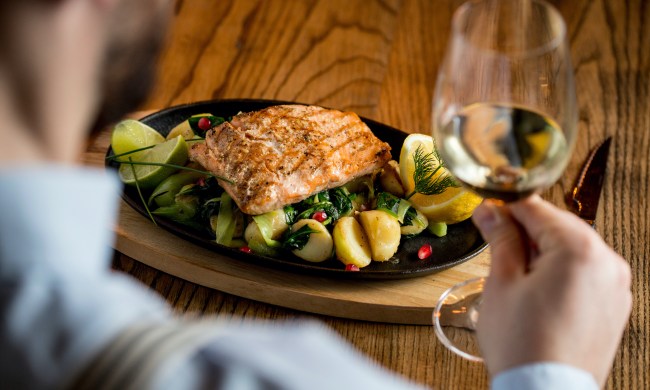The words Italy and wine generally direct the brain straight toward pasta-friendly reds like Chianti and Nebbiolo. The well-versed know there’s an entire galaxy of overshadowed white wines within the country’s borders. Many of these varietals are native to Italy and offer something incredibly distinctive in the glass.
In terms of overall production, Italy is an absolute heavyweight. The Mediterranean nation makes almost one out of every five bottles in the world, placing it ahead of even France in output. Amid all of that grape crushing and barrel aging are some lesser-known wines that can offer something with a little more lasting power than your run-of-the-mill Pinot Grigio.
Next time you’re at the bottle shop, perusing the Italian section of the restaurant wine list, or chatting up your favorite wine bar staff, look to these names. They are some of the most exciting and up-and-coming whites in all of Italy.
Arneis

Arneis calls Piedmont home and was nearly erased from the world of wine in the 1960s before making a triumphant comeback. The grape, along with white varieties in general, has always played second fiddle to the reds of this northern Italian region. So much so that Arneis was long planted simply to keep the vineyard pests from going after the more revered resident Nebbiolo (Arneis’ strong fragrance on the vine is known to attract birds).
It can be challenging to grow, but the results are worth the chore. Arneis can be almost creamy on the palate, showing notes of apricot and pear. It has gained some popularity over the last decade or so, especially stateside, but it’s still something of an anomaly in the greater world of wine. Italians in the Roero district know, however, often referring to it as Barolo Bianco (“white Barolo”). A few American producers play around with Arneis, including the Italian-informed Ponzi Vineyards in the Willamette Valley.
Lugana

Technically made from the Turbiana grape, Lugana is a lively white made from the eponymous region sandwiched between Lombardy and Veneto. Some in the know have described the wine as one of Italy’s real secrets, but folks living in and visiting the Lake Garda area have long appreciated the wine. It can offer a splendid combo of citrus and nutty flavors, with a clean mouthfeel and usually a green apple and floral component.
The grape is a lot like Verdicchio, yet because it’s grown within the unique climatological parameters of Lugana, it yields a different animal in the glass. Most enjoy the wine in its youth but given Lugana’s healthy dose of acid, it could easily be cellared for a decade or longer.
Nascetta

Nascetta is native to the Langhe area of Piedmont and often compared to a Sauternes in terms of its tendency to age very well. Producers treat the variety to stainless and wood, or some combination of the two, in creating a white that glows like the sun in the glass. It tends to show some savory elements, along with crisp fruit qualities and sometimes a touch of honey.
The varieties first real historical reference came in the 19th century when locals wrote about its delicate nature and ability to produce the best wine in the region. Like Sauvignon Blanc, it’s quite aromatic, especially as it ferments into wine (many say it reminds of acacia). Nascetta remains a mostly hidden figure even in Italy, still used for blending more than as stand-alone wines, but that’s changing a bit with wineries looking to highlight native grape species.
Pecorino

No, not the delicious sheep’s milk cheese. This pecorino was most likely born in the Marche region of eastern Italy several hundred years ago. It grew in the wild, along the rugged foothills of the Sibillini Mountains. Locals would harvest the fruit and turn it into a wine with pleasant minerality, straw-like color, and notes of jasmine and even a hint of spice (although it too was often blended in the early days). Pecorino is likely the most popular on this list, with holdings in the regions of Umbria, Tuscany, Abruzzo, Marche, and Lazio.
Some say Pecorino has a Pinot Noir-like ability to flex terroir. Commercially, the first 100% Pecorino to be bottled as such occurred in 1996. Since, it’s become a more reliable single varietal wine, showing a lot of nuance despite often wearing a minimal price tag.
Timorasso

This northern Italian white nearly vanished before an intrepid winemaker named Walter Massa began singing its praises in the 1980s. Prior, it was occasionally made into a table wine or used in the production of the grape spirit grappa. Wine writers are salivating over this variety currently, dubbing it the most exciting white in all of Italy.
Why the hype? The wine is invigorating, with apple and bright peach notes woven together by a glowing thread of acidity. It’s arguably the most expansive on the palate on this list, with a finish that simply doesn’t want to let up. Look out for this variety especially to enter the conversations of winos and sommeliers stateside in the near future.


